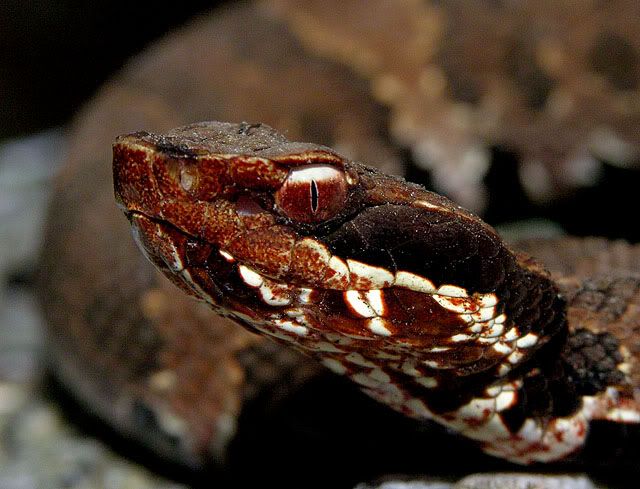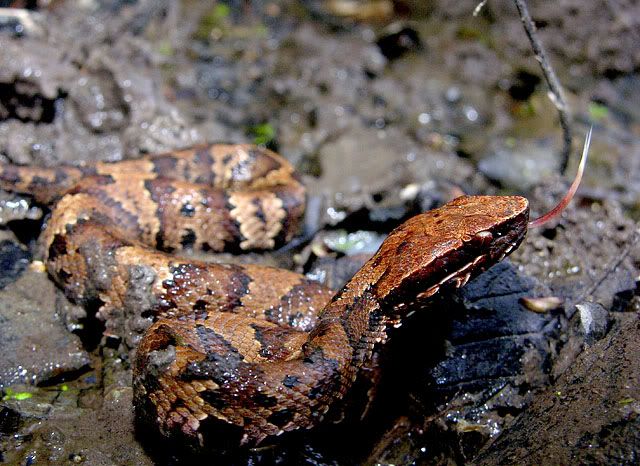Now this was a type of habitat and herping that we were all very used to. Walking along bluffs and near swamps can be
productive in their own right, but what about when the bluffs and the swamp meet? Thats where we found ourselves. Snakes
use the bluffs to hibernate in the winter, and these bluffs close proximity to the swamp makes it so swamp dwelling snakes
use them for hibernation. This is the land where the cottonmouth is more than abundant, they literally seem to be everywhere.
This can lead to some sticky situations, and when in this kind of terrain, one needs to be extremely careful.
Some of the first herps we found here were more amphibians, including a southern Redback Salamander, a few Green Treefrogs,
and literally MILLIONS of Cricket Frogs.
Southern Redback Salamander (Plethodon serratus)
Wayne County, Missouri
The ubiquitous Cricket Frog (Acris crepitans blanchardii)
Wayne County, Missouri
Green Treefrog (Hyla cinerea)
Wayne County, Missouri
It didn't take long to see the first cottonmouth, it was a large individual seen basking on a log.
Western Cottonmouth (Agkistrodon piscivorus leucostoma)
Wayne County, Missouri
After the first one, they start appearing everywhere. Adam and I were together at this time, and we both started walking
extremely slow and took out time to avoid stepping on any cottonmouths. Almost all we saw were juveniles, brightly patterned
and still sporting the yellow tail tip used to attract prey. The juvenile snake will wiggle its tail in the air to lure small
frogs near enough for the snake to get a snack. I was very pleased to see one cottonmouth demonstrating this technique for
us.
Young Cottonmouth displaying the caudal luring technique
Other juvenile cottons


In a low branch about 20 feet from the edge of the swamp I could see a snake about five feet above the water. I was
fairly sure it was a Broad Banded watersnake, which was a species I really wanted to photograph. With the aid of knee high
boots, I waded out to the snake, and saw that it was in fact a broad band. I slowly approached, much like a cat stalking
a mouse, and when I was within reach I made a quick mad lunge and grab combo. This is a manuvre I now have patented, so all
you herpers out there, watch out, this move is officially mine! Needless to say I caught the snake, and it caught me too.
Watersnakes are notoriously bad biters, and this one was no exception. Snake in hand, I began to wade back in, when I realized
that there were several small cottonmouths very close to me in the water. It goes to show that no matter what, you need to
pay attention to your surroundings when there are venomous snakes around, because they can be anywhere. Blood was shed for
the following picture. Adam really helped me to get this snake to sit still.
Broad Banded Water Snake (Nerodia fasciata confluens)
Wayne County, Missouri
After a long and very productive day of herping, we went onward to a fantastic rib dinner. On the way we found a quite
handsome box turtle.
Three Toed Box Turtle (Terrapene carolina triunguis)
Butler County, Missouri
With the trip winding down, we decided to spend the several hours we had the following morning in southern Illinois.

